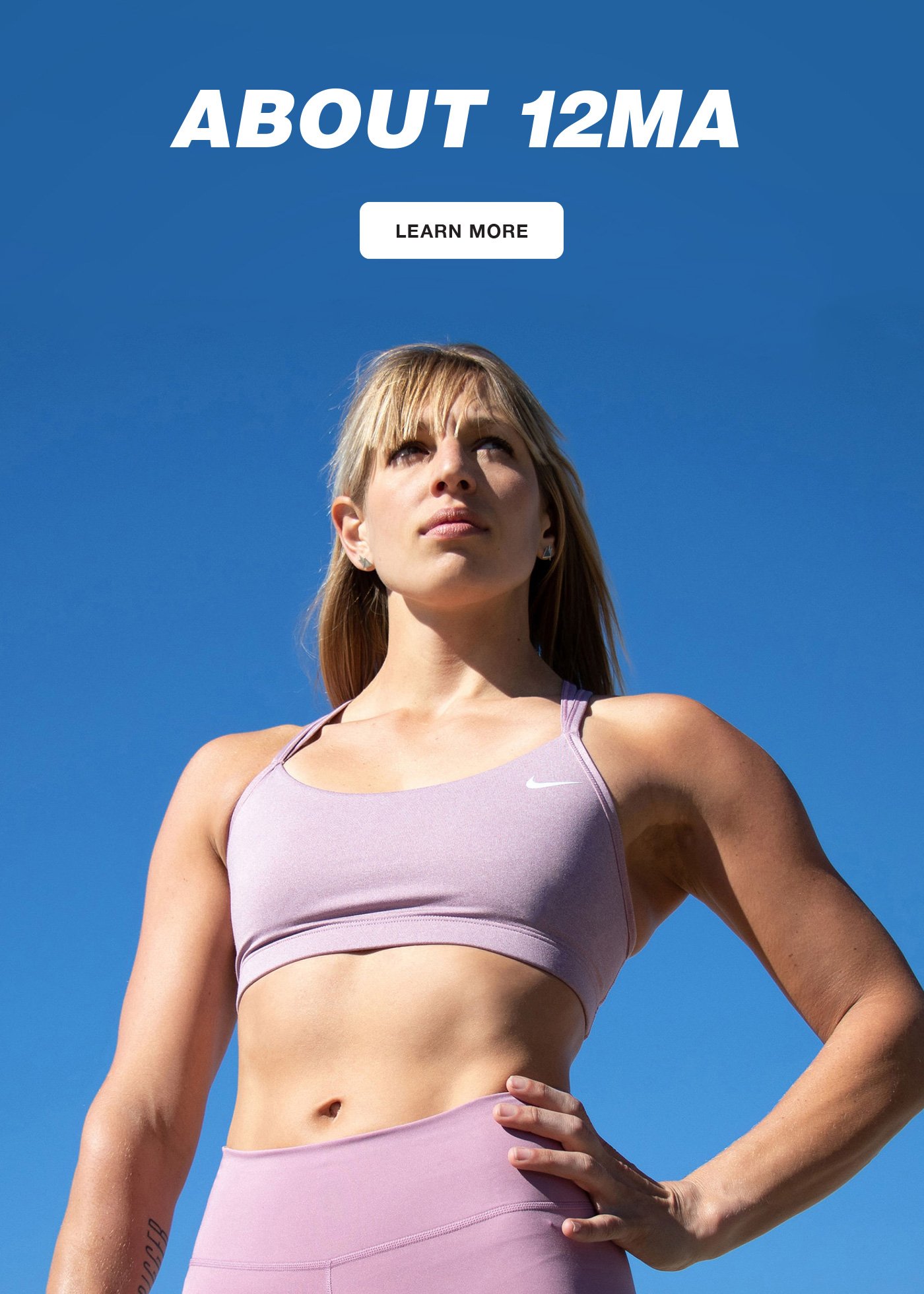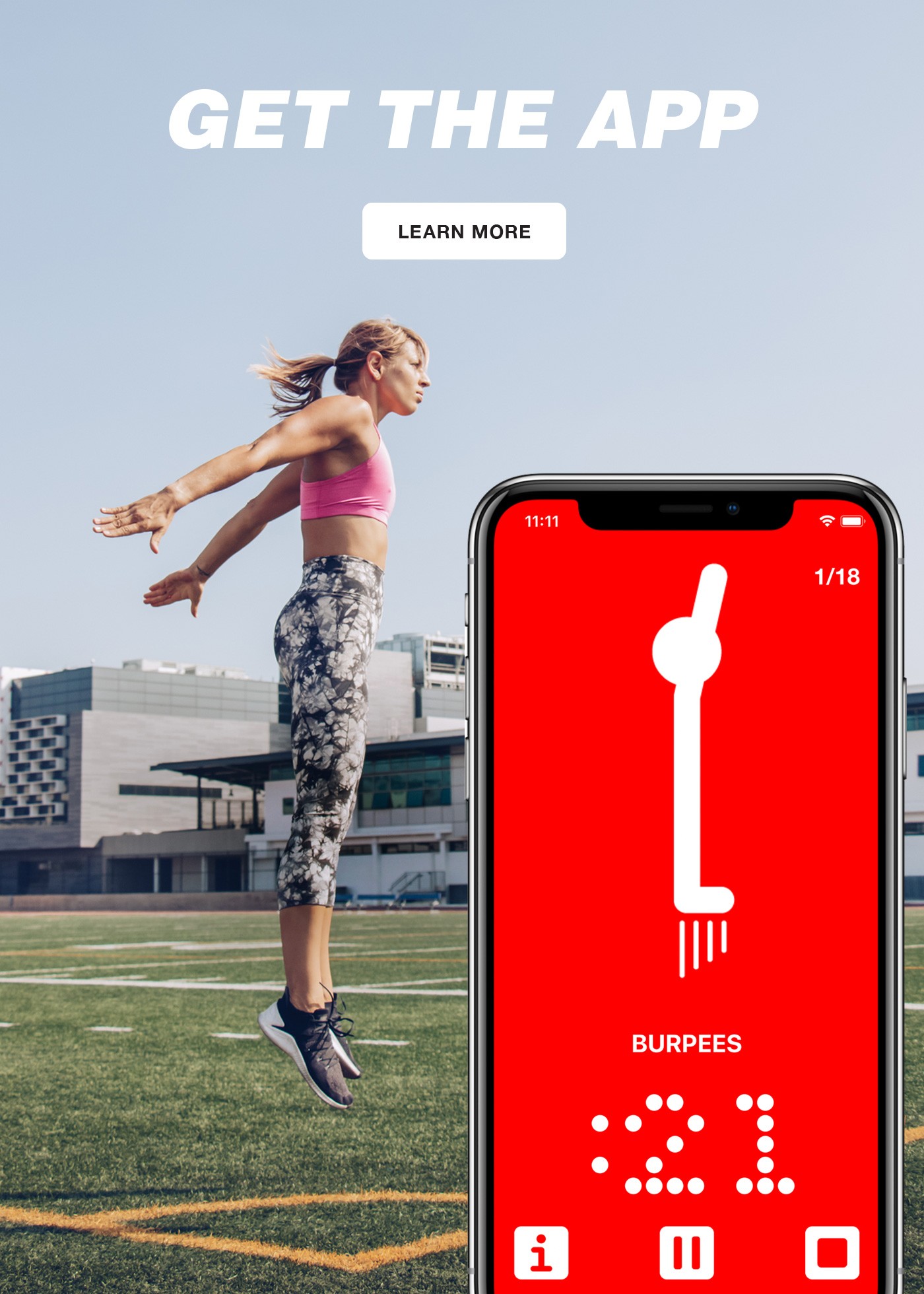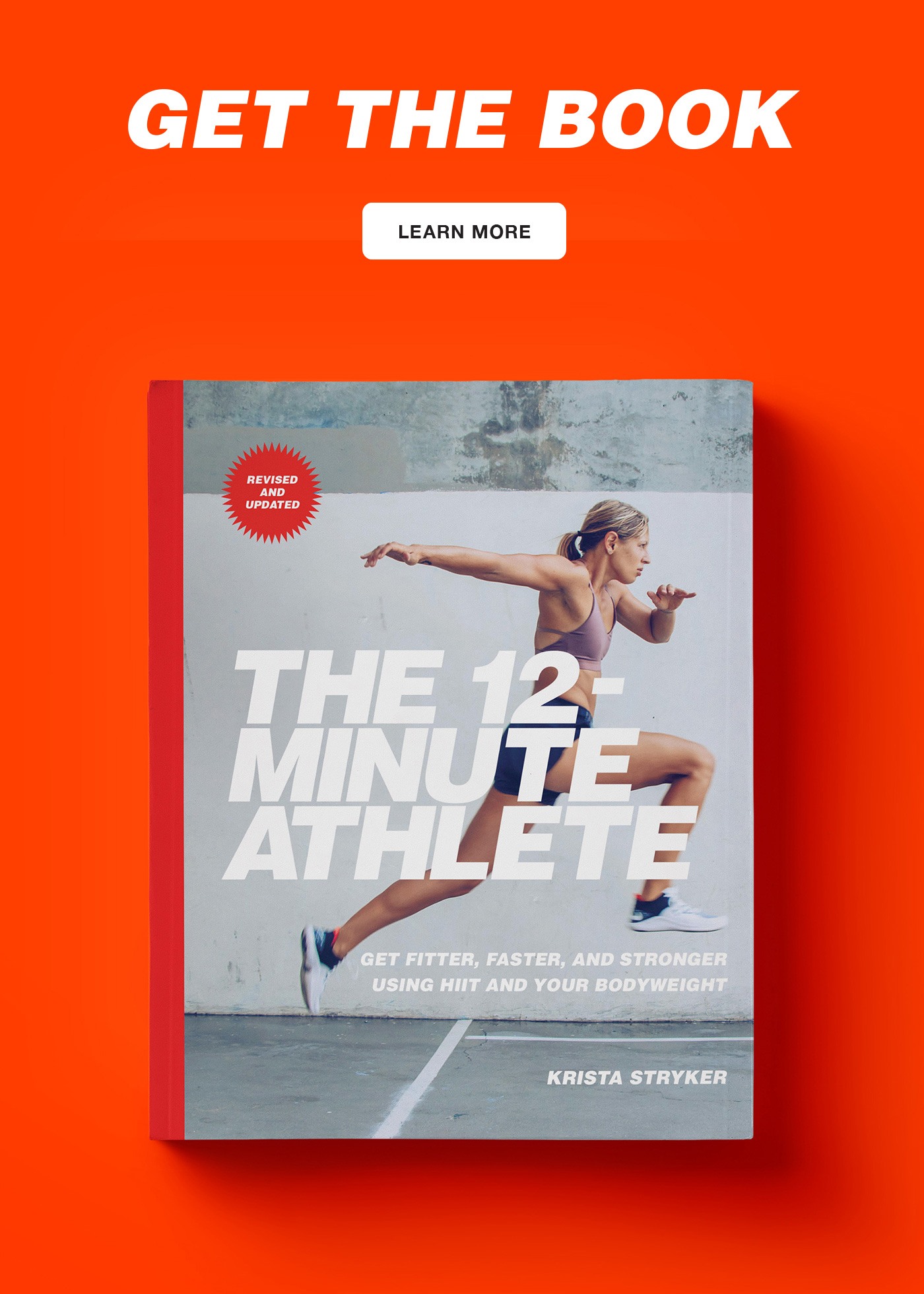Anyone who knows me well knows that I am always hungry.
I think about food constantly (I’ll admit, probably too much), and if I don’t eat every couple of hours I get grumpy, fuzzy headed, and undoubtedly not much fun to be around.
It has taken me a long time to figure out how to eat properly to best fuel my body, keep my energy up, stay lean, and of course keep myself from “turning” on the people around me when I get too hungry. I’m always experimenting with new foods and trying new methods of eating to work towards reaching my full athletic (and mental) potential.
Yet despite fully knowing that I needed to eat every couple of hours, up until recently I still basically ate only three meals a day—with many, many snacks in between.
Here’s what would happen with that approach:
- I’d constantly end up surprised when I’d get hungry not too long after breakfast and try to eat something unsubstantial (a piece of fruit, maybe a few almonds) to tide me over until lunch.
- The same thing would happen to me in the afternoon after I ate a healthy lunch and I’d end up hungry just two to three hours later. This would usually result in me eating at least two small snacks in between lunch and dinner, and almost always resulted in feeling absolutely famished at dinner, so I would scarf down my food like I hadn’t eaten for days.
- Post-dinner, I’d start getting really “snacky” feeling and pretty much just constantly raid the cupboards and graze for the entire rest of the night. Since I assumed I didn’t really need to be eating after dinner, I’d choose mainly snack and dessert foods, which left me feeling endlessly hungry and also zapped my willpower to make healthy choices.
All of this led to me feeling constantly hungry and unsatisfied throughout the day, would cause me to worry about not getting enough food, and worse, made me feel completely guilty when I ate outside of regular mealtimes.
Plus, at times when I was just plain hungry and my willpower low, it would often result in me picking unhealthy options that I wouldn’t have chosen if I’d thought about it more like a meal rather than just a snack.
Changing My Mindset
As I’ve worked hard to become a better athlete over the years, I’ve realized that at times my nutrition has held me back from reaching the level of fitness I’d like to get to. And as I’ve gotten more and more interested in sports nutrition, I’m always reading about how other athletes fuel themselves properly to perform the best that they can.
Although I have zero interest in ever doing a bodybuilding competition, one of the things that comes up over and over in their nutrition planning is that they almost always eat at least five to six proper meals a day.
Eating so often keeps fitness competitors’ metabolism running fast (due to the thermic effect of digesting food), and keeps them from getting overly hungry, which more often than not results in a binge eating session when your willpower is at its lowest.
The more I thought about it, the more I realized that I was already eating six to seven meals a day—I just didn’t treat all the meals as actual meals, usually grabbing snacky, unsatisfying foods in between breakfast, lunch, and dinner rather than something that would actually satisfy me and keep me full.
I decided it was time to make a change.
Constant Snacking to Six Meals a Day
The first day I decided to try my new meal system, I sat down to plan out all my meals so I wouldn’t lose track (yes, I do typically count my calories—here’s why).
With a daily calorie budget of around 2,500 calories a day, I was shocked at how large my meals really could be. I quickly realized that with six meals a day, I could budget around 400 calories a meal, which seemed like a lot compared to my usual snacks of around 100-250 calories.
I can’t tell you how freeing this realization really was. All of a sudden, I started really thinking of food as fuel for my body, rather than feeling guilty when I ate between standard meal times.
Yes, I get funny looks when I break out one of my mini meals throughout the day. Yes, it’s a little more work to eat like this. But I no longer really care. I’ve finally accepted that feeding my body the right foods at the right time will help me stronger and fitter—and probably even make it easier to stay leaner in the long run.
A Typical Day on This New Meal Plan
Curious about what a typical day’s meals might look like on this new system? Here’s an example of what I might eat on a standard day:
Meal #1: breakfast
Oatmeal & scrambled eggs
1/3 cup steel cut oatmeal
1 whole egg
3 egg whites
1 tsp peanut butter
1 tsp ground flax seeds
1 serving fruit like blueberries or raspberries
Meal #2: post-workout
Post-workout smoothie
1 scoop whey protein powder
1/2 cup frozen strawberries
1/2 frozen banana
2 Tbsp oatmeal
1/2 cup coconut water
Meal #3: Lunch
Sweet potato, veggies, & some kind of protein
1 medium sweet potato
1-2 cups veggies (broccoli, brussels sprouts, red peppers, kale, etc.) OR a salad
1/2 cup quinoa
1 serving lean to medium lean protein
1/8 avocado
Meal #4: Mid-afternoon
Banana almond butter toast & cottage cheese
1 piece whole grain toast
1 Tbsp almond butter
1/2 banana
1/2 cup cottage cheese
1/3 cup blueberries
Cinnamon (for cottage cheese)
Meal #5: Dinner
Veggies, protein, & rice
3/4 cup brown rice
2 cups veggies (broccoli, brussels sprouts, red peppers, kale, etc.)
1 serving lean to medium lean protein
1 tsp oil for cooking
Meal #6: Post-dinner
Post-dinner sweet tooth satisfier
1/2 cup greek yogurt
1/3 cup berries
2 peanut butter protein balls
Totals for the day: About 2,500 calories (50% carbohydrates, ~25% protein, ~25% fat)
The Ideal Vs. Reality
Of course, this doesn’t mean that I’m now planning out my meals perfectly every single day, 100% of the time.
I am human, after all, and definitely don’t want to live my life out of tupperware containers and perfectly portioned plastic bags.
Yet thinking in terms of meals has given me a lot of freedom, and as long as I plan a little ahead of time (intentionally make leftovers, do a little meal prepping when I have some spare time, bring healthy foods with me when I’m on the go), I actually think less about food during the day than I did before, since I know I won’t ever be overly hungry and I’ll have my next meal soon after my last.
So will this method of eating work for you?
The truth is that without talking to you about your specific goals, your body type, and your current eating habits, I have no idea. You might, like I did, find that eating more substantial meals more often helps curb your cravings, boost your energy levels, and fuel your workouts. Or, you might be one of those people who prefers to fast for part of the day and eat a couple of larger meals without snacking much at all.
Either way, I encourage you to experiment with your style of eating, your meal frequency, and your overall nutrition to find what works for you long-term.
Because food is fuel—and everything we take affects our mood, our energy levels, and of course, how we perform in our workouts and our lives. So choose wisely, and enjoy every bite.



I like seeing an example of possible eats through out your day. I found your site a while back and have been following you. Thank you! Your very Inspiring and Motivating.
Thanks for this. I’ve been doing the 3 meals, 3-4 small snacks thing for a while, typically with 3 of those snacks being a piece of fruit. Its an interesting thought to rearrange it all, perhaps making the morning snack larger and consolidating the two afternoon snacks.
I’ve generally attributed my ‘always hungry’ state to the hours of cardio (run, bike) I get each week, but while taking a break for injury I’m still hungry. It might be time to adjust the content of the snacks.
Glad it was helpful! I did the same thing for ages 🙂
Thank you for posting this (and for all the work that you do)! I work at an office job and find myself constantly battling the “am I hungry or just bored?” debate. It’s nice to have a better idea of what types of food you can/should eat throughout the day as more mini meals since snacking never really does it for me…usually when I skip it altogether (since I figure I’m aiming more for flavor/distraction than hunger) I end up being crazy hungry by meal time and eat way too much in one sitting. Or I just snack myself into way-too-full mode and am a grumpy lady until I can work it off.
I’m going to experiment with this to try and keep myself on a more regular schedule with controlled portions. I second the desire to have a list of possible eats throughout the day (what are some good 400 calorie meals?).
I completely agree with this post. I’ve found that my hunger is better satisfied with 3 main meals (400-600 calories each) plus an afternoon snack (300-400 calories), with bigger meals — at these same times — on heavy workout days. Smaller snacks, <200 calories, only satisfy me for a very short time and then make me more hungry. It's like an appetizer warming my body up for more food. This is a weak time I need to avoid by eating more at the prior meal time. When I used to eat smaller meals with snacks in between, I was always hunting for the next fix. Now I eat more at meal time and eliminate snacks (except for the mid-afternoon snack, which is more like a fourth meal)
THANKS KRISTA — great site and inspiration!
For myself, I’ve found planning my meals & macronutrient content around my workouts helps keep me on track along with using the intermittent fasting protocol of using a 10 hour eating window between 10 a.m. – 8 p.m. I workout early in the afternoon &/or evening. I normally eat a lighter breakfast (overnight oats mixed with greek yogurt, berries, & flax, chia or hemp seeds) & a heavier lunch (protein/carb/veg/healthy fat)& dinner (same as lunch) along with a post-workout meal (protein powder or a couple of hard-boiled eggs & piece of fruit typically) & a post-dinner meal. Following these rules helps keep me on target & simplifies my decisions–eat healthy, fresh or minimally-processed foods & don’t eat after 8 p.m. 85-90% of the time…
This would be very hard for me to do, I leave for work at 7am, and I don’t get home until 6pm, which really doesn’t leave me a whole lot of time to work out, or prepare these meails! Any suggestions for somebody who has little to no free time, except on the weekends?
I would suggest working out in the morning before you leave for work…try one of Krista’s HIIT workouts…means you only need to wake up 15 mins earlier… Any movement you can work in during the day will also help, walking meetings, taking the stairs, desk stretches, going for a walk at lunch, etc.
As for meals, I usually prepare extras on the weekends & use that for lunches during the week. Salads, canned tuna, salmon, yogurt (especially plain Greek which is higher in protein) also works well for me. Make some protein bars, trail mix, wash & cut up fruit & veg & leave in the frig ready to go for workdays. Sometimes, I’ll make a large batch of soup, chilli, chicken, etc. & individually portion & freeze it so it’s ready to go at any time. I also make up a batch of hard boiled eggs & keep those in the frig for week days. It just takes a bit of planning ahead & organizing but it’ll make your life easier on the workdays.
I already get up at 3am now, by the time I get home I am tired and in bed by 8:30!!
I couldn’t have said it better myself Alison 🙂 Just a little planning and food prep can make all the difference!
Same thing happened to me! I have 3 kids to look after, and I also workout everyday, so I used to get really hungry -and angry- between lunch and dinner, and snacks were just not doing it for me. I now plan four healthy meals a day, and this has done wonders for my energy level. No more hangry momma! I love your site Krista!
I changed too.
To Paleo. I actually went down to 2 meals a day.
1 large at noon and 1 small supper with the kids.
send me your e-mail, I’ll send you a before/after pic.
Everyone is different – what works for some people won’t work for others. You have to experiment with your own eating and see what works for your body and activity level! Glad you had success though.
Thanks for sharing, good article 🙂
When measuring your oats (1/3c) for breakfast, is the measurement before or after the oatmeal is prepared? Thank you!
Before!
Thank you!
Thanks
Thanks for the meal suggestions – I love having cottage cheese or yogurt with fruit in between meals. I can’t believe anyone gave you looks for eating outside “normal” meal times! As a medical student who fits in workouts wherever I can, I’ve had to establish my own normal, so it’s nice to see others who have too.
2,500 calories seems a lot for a female! I imagine most females would put on weight if they ate that amount of calories daily. I know I would. And, I do exercise almost every day. Maybe it is because Krista is probably half my age….
Your website is called ’12 minute athlete’ but I bet you do way more than 12 mins exercise in a day. You couldn’t eat that amount and look as slim as you do with doing only 12 mins exercise a day. Can you?? Nula
Ya know, the increased meal frequency = increased metabolism due to the thermic effect of food has been LONG debunked. The thermic effect of food is a percentage of the calories consumed, so over the course of the day it does not matter how many meals you have eaten. For example, if the thermic effect of food (TEF) is 20% of the calories consumed: 1800 calories/6 meals = 300 calories/meal x 20% = 60 calories burned due to thermic effect of food/meal. 60 x 6 meals/day = 360 calories burned d/t TEF. 1 1800 calorie meal/day x 20% TEF = 360cal burned d/t TEF.
Eat however many meals/day that floats your boat, but don’t kid yourself that it’s revving your metabolism/burning more calories if you eat 6 meals over 3 meals per day.